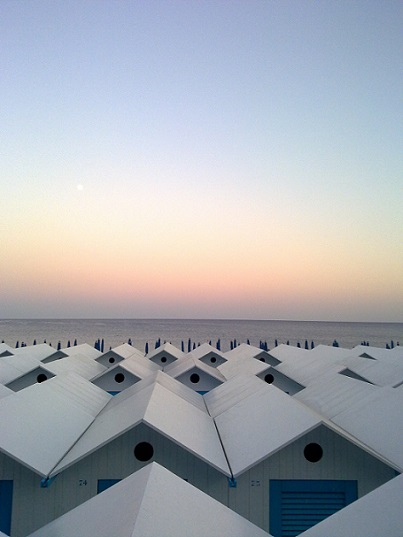Only noise if you can see. Spazi vuoti e luoghi dell'arte
DOI:
https://doi.org/10.13130/2240-9599/4199Abstract
What happens to critical and aesthetic discourse when a painter promises that he will not paint anymore? What goes on when a famous artist says that all the paintings are just junk or dust, and all the institutional sites of the art-world – actually, the White cube of Clement Greemberg’s Modernism – are just wasted spaces? What’s the matter or the reason of the prestige of a similar no-working man, and what’s the perceptible quality of the value of a so-called art without any artefact at all? In the late '50sand early'60s in Paris, Andy Warhol and Yves Klein claimin different butvery similar ways the end of painting and the disappearing of the work of art from the exposition site and its becoming immaterial or environmental art, indiscernible within its surrounding living space and, finally, with the atmosphere of glamour and snobbish artist’s life. What kind of phenomenology, pragmatic, rhetoric, poetics, economy and ontology is possible when nospectatorialmode of visual consumption is any longer possible? What type of aesthetic relationship actually happens under these planned and produced conditions of non-perceptual and ‘artialized’ living experience? After more than fifty years, the statements of The philosophy of Andy Warhol and the Exposition of void of Yves Klein have not yet stopped to pose questions as such to aesthetics, theory of literature and critics, and to the history of art.
Riferimenti bibliografici
BUCHLOH, Benjamin H.D., Plenty of nothing: from Yves Klein’s ‘Le Vide’ to Arman’s ‘Le Plein’, in B. Blisière (ed.), Premises: invested spaces in visual arts. Architecture and design from France 1958-1998, New York, Guggenheim Museum, 1998, pp. 86-99.
CELANT, Germano, Arte ambientale californiana. Asher, Nauman, Irwin, Orr, Turrell, Nordman, Wheeler, «Domus» 547 (1975), pp. 52-53.
CELANT, Germano, Arte come esperienza dell’esperienza. Asher, Nauman, Irwin, Turrell, Nordman, Wheeler, Orr, «Casabella» 402 (1975), pp. 46-48.
DANTO, Arthur C., The artworld, «Journal of Philosophy» 61 (1964), pp. 580-581.
DANTO, Arthur C., Andy Warhol, New Haven - London, Yale University Press, 2009.
DE DUVE, Thierry, La Nouvelle donne: remarques sur quelques qualifications du mot ‘art’, in Ch. Genin - C. Leroux - A. Lontrade (sous la direction de), Juger l’art?, Paris, Publications de la Sorbonne, 2009, pp. 166-176.
ELKINS, James, The object stares back: on the nature of seeing, New York, Simon & Schuster, 1996.
FIMIANI, Filippo, L’espace qui nous habite, «Faces, Journal d’Architecture» 69 (2011), pp. 28-31.
FIMIANI, Filippo, Fantasmi dell’arte, Napoli, Liguori, 2012.
FIMIANI, Filippo, Spazi vuoti, istruzioni per l’uso. Tra mondo dell’arte e mondo della vita, in M. Cometa, D. Mariscalco (a cura di), Al di là dei limiti della rappresentazione. Letteratura e cultura visuale, Macerata, Quodlibet, 2014, pp. 79-98.
FRIED, Michael, Art and objecthood, «Artforum» (1967), pp. 12-23.
GENETTE, Gérard, L’Œuvre de l’art, Paris, Seuil, 1994-1997.
GRIFFERO, Tonino, Atmosferologia. Estetica degli spazi emozionali, Roma - Bari, Laterza, 2010.
KLEIN, Yves, Le dépassement de la problématique de l’art et autres écrits, édition établie par M-A. Sichère - D. Semin, Paris, École Nationale Supérieure des Beaux-Arts, 2003.
LÄHNEMANN, Ingmar, Inside and outside the white cube, Hamburg, Disserta Verlag, 2011.
MERLEAU-PONTY, Maurice, La natura. Lezioni al Collège de France 1956-1960, tr. it. di M. Mazzocut-Mis - F. Sossi, a cura di M. Carbone, Milano, Cortina, 1996.
MOLLER, Dan, The boring, «Journal of Aesthetics and Art Criticism» 72 (2014), pp. 181-191.
MUSIL, Robert, Der Mann ohne Eigenschaften, Hamburg, Rowohlt, 1933, tr. it. di I. Castiglia, cura e introduzione di M. Latini, L’uomo senza qualità, Roma, Newton Compton, 2013.
O’DOHERTY, Brian, Inside the white cube. The ideology of the gallery space, Berkeley - Los Angeles, University of California Press, 1999, pp. 38-39.
VAN DEN HAAG, Ernest, Snobbery, «The British Journal of Sociology» 7 (1956), pp. 212-216.
VISCHER, Robert, Sul sentimento ottico per la forma, tr. it. in R. Vischer - F.Th. Vischer, a cura di A. Pinotti, Simbolo e forma, Torino, Aragno, 2003, pp. 35-106.
WARHOL, Andy, The philosophy of Andy Warhol: from A to B and back again, New York, Harcourt Brace Jovanich, 1975, pp. 129-130.
WARHOL, Andy, Hackett, Pat, POPism: the Warhol’s 60s, New York, Harcourt Brace Jovanich, 1980.



